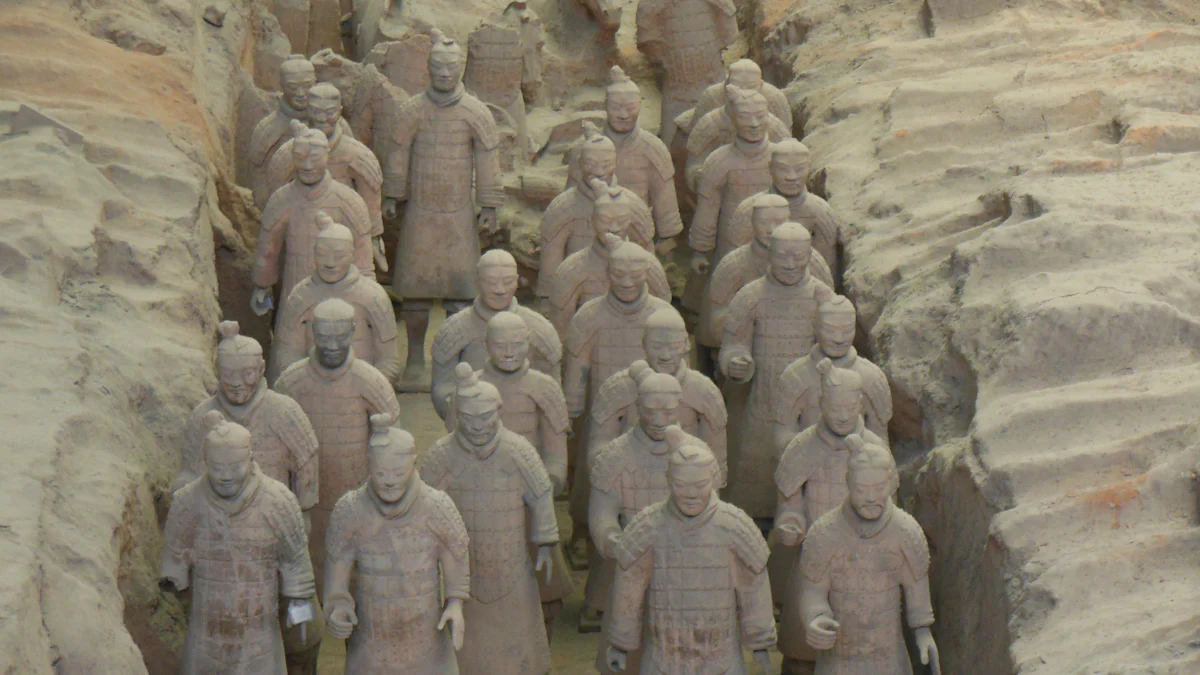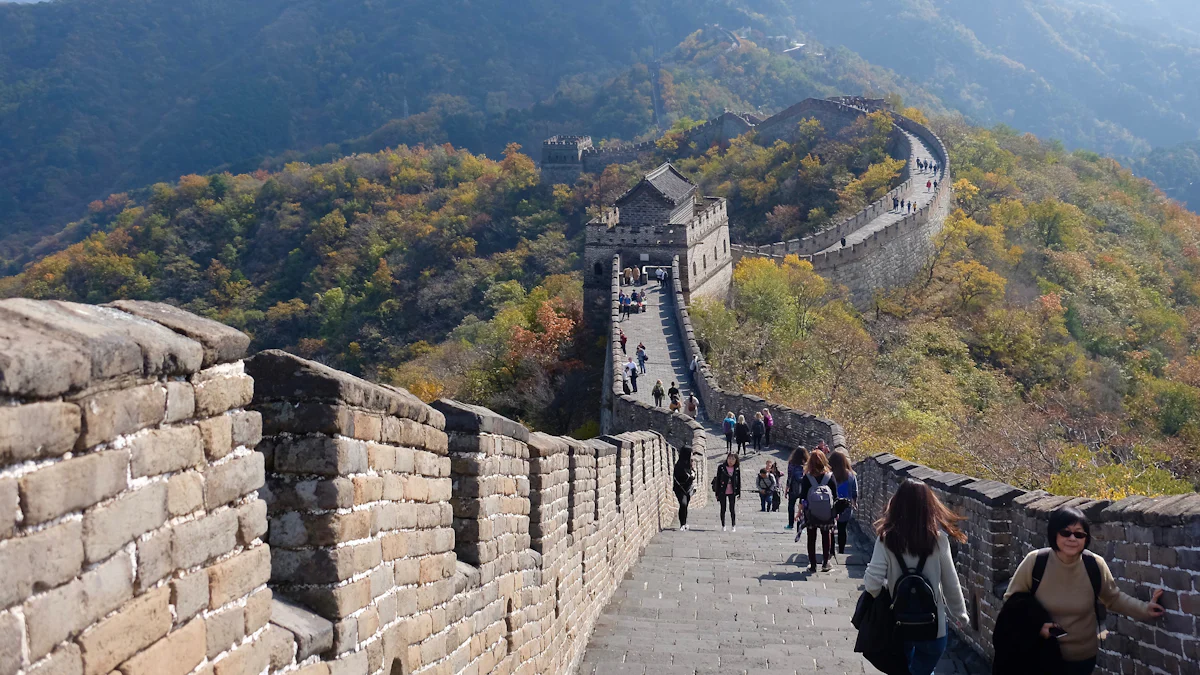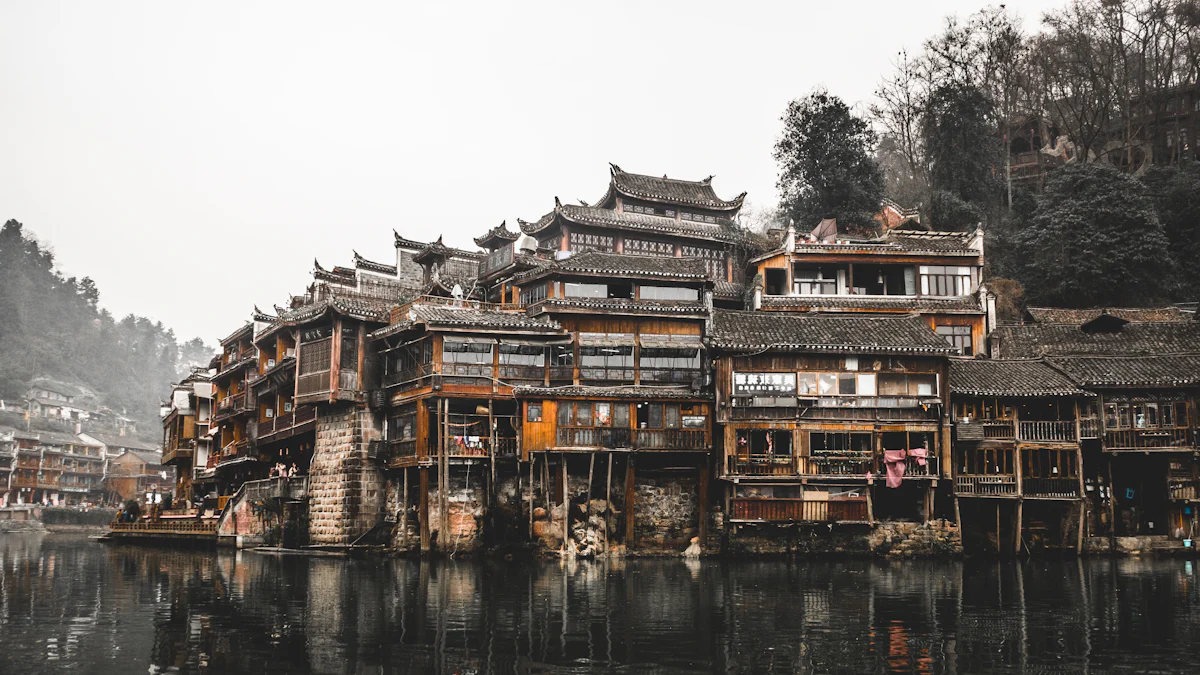Imperial China

China's Imperial history stands as a monumental chapter in world history. This era began when Qin Shi Huang became the first emperor, marking the start of the Imperial period. China entered a phase of remarkable unification and standardization under the Qin Dynasty. The significance of this period cannot be overstated. Imperial China influenced neighboring regions through foreign relations and the establishment of the Silk Road. The Han Dynasty saw Confucianism become the ruling ideology, shaping Chinese governance. Beijing emerged as a central hub during these times. Understanding the historical progression of Chinese dynasties offers insights into how China's rulers influenced global culture and politics. The achievements of the Tang Dynasty fostered political and cultural coherence. Imperial China's legacy continues to impact modern society.
The Qin Dynasty (221-206 BCE)

Unification of China
The Qin dynasty marked a pivotal moment in Chinese history. Shi Huang, the first emperor, initiated the unification of China. The Qin State united various warring factions under a centralized authority. This centralization of power created a systematic bureaucracy. The emperor standardized writing, currency, weights, and measures. These changes overcame cultural barriers and unified the empire. The people began to see themselves as part of a single kingdom.
The Great Wall
The construction of the Great Wall of China stands as one of the most remarkable achievements of the Qin dynasty. The wall served a dual purpose. It provided defense against northern invaders and facilitated trade across regions. The wall's construction required immense labor and resources. The impact on defense and trade was profound. The Great Wall of China became a symbol of strength and unity.

The Qin dynasty existed for a brief period, yet its influence endures. The reforms and constructions initiated by Shi Huang laid the foundation for future dynasties. The legacy of the Qin continues to shape China's historical narrative.
The Han Dynasty (206 BCE-220 CE)
Expansion and Prosperity
The Han dynasty marked a period of remarkable expansion and prosperity. The establishment of the Silk Road by the Han emperors opened new avenues for trade. This trade route connected Asia to the Mediterranean and East Africa. The Silk Road enriched the economy and enhanced cultural communication among different regions. The Han State gained new commodities through trade with the west. This development permanently altered the course of Chinese history.
Key Impacts of the Silk Road:
Promoted economic growth and cultural exchange.
Provided protection and stability along trade routes.
Established contact with Indian and Hellenistic cultural spheres.
The Han dynasty's territorial expansion provided security for these trade routes. The State united disintegrated China, ensuring stability and prosperity. This era saw flourishing trade and cultural advancements.
Confucianism as State Philosophy
Confucianism became the cornerstone of governance during the Han dynasty. The Han emperors promoted Confucian ideals to shape the political landscape. Confucianism influenced governance by emphasizing moral integrity and social harmony. The Han State implemented educational reforms based on Confucian principles. These reforms created a system that valued knowledge and virtue.
Influence on Governance:
Emphasized ethical leadership and moral values.
Established a merit-based bureaucracy.
Encouraged education and intellectual development.
The integration of Confucianism into the Han dynasty's governance left a lasting legacy. The State's commitment to Confucian ideals fostered a culture of learning and ethical governance. This approach strengthened the dynasty's influence and stability.
The Tang Dynasty (618-907 CE)

Golden Age of Culture
The Tang Dynasty marked a golden age of culture in China. Poetry and literature flourished during this period. Li Bai and Du Fu emerged as prominent poets. Their works captured the beauty and complexity of life. The Tang era saw a revival of ancient orchestras. Courtly dancers performed with grace and elegance. Foreign music and dance enriched Chinese culture.
Art and architecture reached new heights. Artists created stunning paintings and sculptures. The use of vibrant colors and intricate details characterized Tang art. Architects designed grand structures like the pagoda. These buildings symbolized spiritual and cultural achievements.
Trade and Diplomacy
Trade routes expanded significantly under the Tang Dynasty. The Silk Road played a crucial role in this expansion. Traders exchanged goods such as silk, spices, and precious metals. This trade led to a rich, multiethnic society. Exotic goods and foreigners influenced Chinese culture.
Foreign relations and influence grew during the Tang era. The empire established diplomatic ties with neighboring regions. Envoys traveled to distant lands to foster alliances. The Tang court welcomed foreign dignitaries. These interactions enhanced cultural exchange and understanding.
The Song Dynasty (960-1279 CE)
Technological Innovations
The Song Dynasty witnessed remarkable technological advancements. Gunpowder technology evolved significantly during this period. The invention of firearms and rocket weapons marked a turning point in military history. Bi Sheng introduced the innovation of movable type printing. This development enhanced the efficiency of printing processes. Education and social mobility experienced profound impacts due to this advancement.
Agricultural techniques also saw significant progress. Technological advances in rice cultivation supported a population explosion. Northern invasions led to these innovations. The construction of the astronomical water clock-tower by Su Song represented another technological marvel. This clock-tower included a celestial globe and an armillary sphere. Wooden mannequins displayed time with precision.
Economic Growth
The Song Dynasty experienced substantial economic growth. Urbanization transformed cities into bustling centers of commerce. Trade flourished within these urban areas. Merchants exchanged goods and ideas, contributing to economic prosperity. The development of a sophisticated monetary system facilitated trade. The introduction of paper money revolutionized financial transactions.
Key Aspects of Economic Growth:
Urban centers became hubs of trade and culture.
Paper money improved the efficiency of commerce.
The economy diversified with new industries and crafts.
The Song Dynasty's economic achievements laid the groundwork for future prosperity. The combination of technological innovations and economic growth defined this era. These advancements left a lasting legacy on Chinese society and beyond.
The Ming Dynasty (1368-1644 CE)
Maritime Exploration
Zheng He's Voyages
The Ming Dynasty ruled China with a vision of expanding maritime influence. Zheng He, a renowned admiral, led grand voyages across the seas. His fleet visited ports in Borneo, the Malacca Sultanate, and Sri Lanka. These expeditions reached India, Persia, Arabia, and East Africa. The voyages showcased China's naval power and diplomatic reach.
Key Destinations of Zheng He's Voyages:
Borneo
Malacca Sultanate
Sri Lanka
India
Persia
Arabia
East Africa
The Ming emperor's ocean expeditions were unmatched in world history. These missions strengthened trade ties and cultural exchanges. The expeditions highlighted China's role as a global maritime leader.
Impact on Global Trade
Zheng He's voyages had a profound impact on global trade. The expeditions opened new trade routes and expanded existing ones. Chinese goods like silk and porcelain reached distant markets. The exchange of goods enriched both China and its trading partners.
Effects on Trade:
Expanded trade routes
Increased cultural exchanges
Enhanced China's global influence
The marine expeditions during the Ming Dynasty connected China to the Persian Gulf and Africa. These connections fostered economic growth and cultural diversity.
Cultural Flourishing
Literature and Arts
The Ming Dynasty experienced a cultural renaissance. Literature flourished with the creation of classic novels. Writers produced works that reflected society and human nature. The arts saw advancements in painting and calligraphy. Artists used vibrant colors and intricate details to create masterpieces.
Notable Achievements in Literature and Arts:
Creation of classic novels
Advancements in painting and calligraphy
Use of vibrant colors and intricate details
The cultural achievements of the Ming era left a lasting legacy. These contributions enriched China's artistic heritage.
Architectural Achievements
Architecture thrived under the Ming Dynasty. Builders constructed magnificent structures like the Forbidden City. This architectural marvel symbolized imperial power and grandeur. The Great Wall saw significant enhancements during this period.
Key Architectural Feats:
Construction of the Forbidden City
Enhancements to the Great Wall
Symbolization of imperial power
The architectural achievements of the Ming Dynasty showcased China's engineering prowess. These structures continue to attract admiration worldwide.
The Qing Dynasty (1644-1912 CE)
Expansion and Administration
The Qing Dynasty marked a period of significant territorial expansion in China. The empire's territory grew extensively, incorporating regions such as Tibet, Xinjiang, and Mongolia. This expansion increased the population from 150 million to 450 million. The Qing rulers implemented administrative reforms to manage this vast empire. These reforms included the introduction of the 'Secret Palace Memorial System.' This system allowed local officials to communicate directly with the emperor. The system improved policy implementation and expanded state reach into new territories.
Key Administrative Reforms:
Direct communication between local officials and the emperor
Improved policy implementation
Expansion of state reach into new territories
Cultural accomplishments flourished during the Qing period. The dynasty saw advancements in jade carving, painting, and porcelain. Philological developments and the rise of Peking opera enriched China's cultural heritage.
Challenges and Decline
Internal strife and rebellions posed significant challenges to the Qing Dynasty. The Taiping Rebellion and the Boxer Rebellion exemplified these internal conflicts. These uprisings weakened the central authority and drained resources. Western influence also contributed to the decline of the Qing Dynasty. The Opium Wars and subsequent treaties imposed by Western powers eroded China's sovereignty.
Major Challenges Faced by the Qing Dynasty:
Internal rebellions such as the Taiping and Boxer Rebellions
Western influence through the Opium Wars
Erosion of China's sovereignty
The combination of internal strife and external pressures led to the eventual fall of the Qing Dynasty. The collapse marked the end of imperial rule in China and paved the way for the establishment of the Republic of China.
The dynasties of Imperial China shaped the nation's development through significant achievements. The Qin Dynasty standardized writing and built the Great Wall, creating a unified state. The Han Dynasty expanded trade via the Silk Road, fostering economic growth. The Tang Dynasty marked a golden age of culture, contributing to poetry and arts. The Song Dynasty introduced technological advances like paper money, enhancing commerce. The Ming Dynasty excelled in maritime exploration, expanding global trade. The Qing Dynasty expanded territories, enriching cultural accomplishments. Imperial China's legacy endures in modern times, influencing global culture and politics.
See Also
Civilization's Rise: A Journey Through History to Today
Global Past: Ancient Era to the Digital Age
Illustrated Journey: The Ancient Empire of Rome

